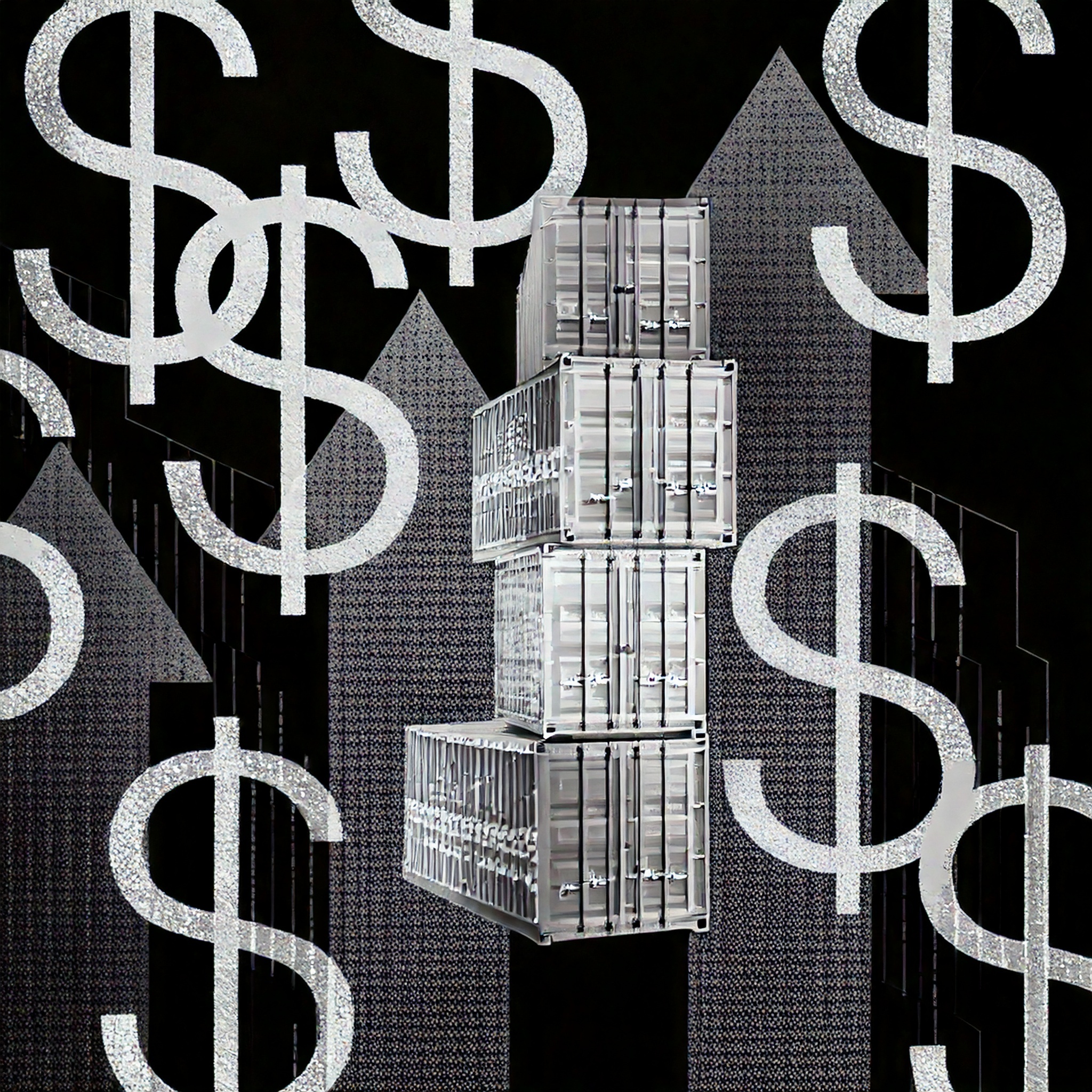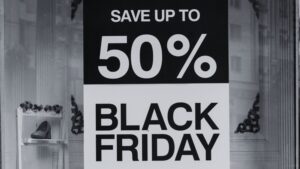The retail sector, already bustling with activity and constant change, faces a new challenge: the impact of Trump-era tariffs. Tariffs are essentially taxes on imports, and they’ve become a pivotal force shaping the landscape of retail. Affecting everything from pricing to supply chain management, tariffs have prompted retailers to adapt swiftly and strategically.
“Adapting isn’t a choice—it’s a necessity for survival in the modern retail environment.”
Understanding these tariffs’ implications is not just about numbers and policies; it’s about seeing the ripple effect on the entire retail ecosystem—from large conglomerates to your local store. These tariffs will effect how business is done. To see how retailers are responding, let’s take a look at some major examples and what consumers think about it.
From May 14, US and China will reduce their respective tariffs for 90 days by 115% each – bringing US tariffs on China down to 30% and China’s tariffs on the US down to 10%.
All information accurate as of May 14.
Jump to:
- Which tariffs effect retailers?
- Strategies to handle the tariffs
- How retailers are responding
- How consumers are responding
- Tariff impact on Temu, Shein, and Aliexpress
- Cost implications
- Future outlook
Which tariffs effect retailers?
The Trump-era tariffs are an ongoing topic, but as of April, the tariffs placed on imports are: up to 145% on Chinese goods (not including some electronic products) and a 10% tariff on goods from other countries. Earlier in the month, President Trump presented a list of tariffs on forgein imports–these have been paused for 90 days that will end in late May.
Read more in our whitepaper: How US retailers are responding to tariffs
Strategies to handle the tariffs
In the complex landscape of retail, each strategy plays a crucial role in navigating the intricate network of challenges and opportunities. Adapting to ever-evolving market conditions is a necessity, not a choice. Retailers must continually refine their approach for success in an unpredictable world. Strategies to handle tariffs include: diversifying supply chains, increasing inventory before tariffs activate, taking an elasticity-pricing approach, and having credit insurance.
Increase consumer intelligence
Which stores are performing and which aren’t? Should you adjust store opening hours? How are your competitor’s stores performing and can you benchmark your own to compare?
When you have more questions than answers, increasing your consumer intelligence is necessary to form your strategies.
Using foot traffic data, discover how consumers are behaving on a day to day basis. Compare visits over time to see how the tariffs are impacting visits to your store and compare that to your competitors, so you can see if your experience is unique or an ongoing trend in your industry.
No decision can be made without the right data behind it. As your adjust your strategies, supply chain and inventory, consider analyzing the current and ongoing impact of tariffs on your business to inform your next steps.
Diversify supply chains
Reducing reliance on a single supplier or country may help you minimize the impact of the tariffs. This can involve identifying new suppliers, negotiating contracts, and adjusting logistics networks.
Alterantive sourcing such as loooking to countries with lower tariffs may be an option. However, this will involve restructing your supply chain to source from these new locations and there’s no guarntee the tariffs will stay in place forever. Before you restructure, speak to your suppliers and consider bulk ordering before making a final decision.
Increasing inventory before tariffs hit
Some retailers, including Amazon, have reacted by ordering more products from China before the tariffs are active. While the tariffs are now in place, retailers would be wise to watch the next 90 days carefully to estimate if the tariffs on China will continue at the current rate. Most other countries have a tariff of 10% which is still significant. Depending on how negotiations go, retailers may seek to order more in case tariffs are increased.
- Forecast Demand: Use historical data to assess future demand accurately. This helps you gauge how much inventory you should purchase ahead of tariff changes.
- Supplier Negotiations: Communicate with your suppliers about the incoming tariffs. Explore bulk purchasing options or lock in current prices to reduce future expenditures.
- Consider Storage Solutions: With increased inventory, think about your storage capabilities. Ensure you have the space or necessary logistics partners to handle the influx.
- Evaluate Financial Capacity: Increasing inventory requires additional upfront capital. Ensure your financial reserves are robust enough to support this strategy without straining cash flow.
The difficulty here is that no one can say what will happen once those 90 days are up and ordering more inventory may backfire if consumer sentiment about the economy continues to decline. It’s best, then, to stay flexible and prepare for all scenarios.
Elasticity-based approach retail
We expect to see more retailers turning to elasticy-based strategies when possible. Elasticity here refers to price sensitivity. Decreasing prices on elastic goods such as vases while increasing prices on inelastic goods such as bread is a common strategy used by supermarkets, though with tariffs more retailers may turn to these strategies to offset price increases.
The key here is that price sensitivty changes over time as consumer behaviour shifts. Keeping an eye on consumer behaviour and tariff news will be important to adjust any pricing strategy.
Check your insurance
If your business has been directly impacted by the tariffs, some losses of your supply chain could be recouped through comprehensive credit insurance policies. Credit insurance protects a product seller or supplier from a default on non-payment, usually for short-term transactions. This can include default or non-payments related to tariffs impacts. Double check your insurance or consider acquiring credit insurance.
At pass_by, we offer the highest in market accuracy with 94% correlation to ground truth, over 15 data inputs, and a full 90 days of predictive feeds. Sign up to our newsletter so you never miss a report.
How retailers are responding to the tariffs
How should a retail company respond to tariffs? Sometimes, it’s best to look at what market leaders and what your competitors are doing in response to form yours. Major companies such as Amazon, Hobby Lobby, Fabletics, and others all have differing responses. Depending on your industry and supply chain, your response may be different too. Here are some examples of how retailers are responding to the latest tariffs:
Fabletics
BREAKING: Clothing stores like Fabletics now have a Tariff Surcharge Line Item.
— Brian Krassenstein (@krassenstein) April 7, 2025
This is the new norm in the Trump economy.
I commend any companies who do this. Transparency is good and at least we know why our prices went up. pic.twitter.com/RZl20ys1gv
Since 2023, sportswear retailers Fabletics has added the cost of tariffs onto its receipts so customers could see the impact of tariff charges onto their purchases. Although the retailer has been doing this for some time, it was on the 7th of April when the news about the tariffs was spreading that a receipt of a purchase including the tariff charge went viral with many commenting that it was a smart move for the company to include any tariff charge on a receipt.
Making the tariff impact on customers more visually immediate may be an appealing option for some retailers, though whether or not other businesses will join Fabletics in including it in this way remains to be seen.
Amazon
Andy Jassy, Amazon’s chief executive, said in an interview on CNBC on Thursday that the company had accelerated bringing some inventory to the United States ahead of the tariffs and would try to “renegotiate terms” with some suppliers.
When the tariffs were announced, Amazon began cancelling inventory orders of products made in China, Vietnam, and Thailand according to Bloomberg. This did catch vendors off guard raised concerns, though Amazon’s early moves to readjust its supply chain and inventory may work out for it in the long run.
Steve Madden
In February the shoemaker Steve Madden announced that it had reduced the percentage of goods it imported from China to 58 from 71 since November. Steve Madden wants to reduce that number even further (to the low 40s) in 2025.
“We will selectively raise prices,” Edward Rosenfeld, Steve Madden’s chief executive, told investors in February. “Where we think that we can get a little bit more for the goods, we will do that starting in the fall.”
Hobby Lobby
Hobby Lobby has responded by delaying shipments, not cancelling orders, according to The New York Times. While Amazon is cancelling orders, Hobby Lobby appears to be lying in wait by delaying shipments. The crafting retailer told vendors that the delays were because of the tariffs and the “rapidly shifting and unpredictable landscape.” Hobby Lobby would be reviewing plans weekly.
At pass_by, we offer the highest in market accuracy with 94% correlation to ground truth, over 15 data inputs, and a full 90 days of predictive feeds. Sign up to our newsletter so you never miss a report.
How consumers are responding to the tariffs
Consumers have responded to the tariffs with confusion, anxiety, and interest. As the tariffs were announced, social media was flooded with images and videos of the President holding the carboard notice of tariff percentages. #Tariffs were trending on TikTok.
While its early days and the tariffs haven’t quite yet reached customer’s pockets, consumer sentiment has shifted to the negative about the economy.
The University of Michigan Consumer Sentiment Index fell 11 percent in March, the third straight monthly decline, to its lowest level since November 2022. Anxiety about rising prices could persuade consumers to buy more secondhand apparel and other items on the secondary market, according to ReturnPro, which recently surveyed consumers about products they had returned. Nearly 85 percent said they were concerned that tariffs would raise prices.
Watching these trends and consumer response can help retailers form a strategy which keeps in mind consumer sentiment. As concerns around prices grow, making loyalty schemes, discounts, and sales known may help to mitigate tariff impact and bring in customers to your stores.
Tariff impact on Shein, Temu, and AliExpress
On 1 May, the de minimus exemption which keeps the costs of Temu, Shein and AliExpress low will end due to trade restrictions. Along with tariff charges of 145% on Chinese goods, the American market for low-cost Chinese goods looks like a quickly closing market.
A recent report from Omnisend indicating that nearly 30% of customers will reduce or stop shopping at China-based online marketplaces like Shein, Temu, and AliExpress if prices rise.
As prices rise, these e-commerce retailers become less appealing to consumers. This could be an opportunity for oither retailers to fill the space left behind if the timing is right.
Cost implications: what tariffs mean for retail pricing
When it comes to retail pricing, tariffs can feel like a tightrope walk. They represent a delicate balance of managing rising costs while keeping your prices attractive to consumers. With tariffs in place, the cost of importing goods can rise, leading to increased expenses for retailers. Are these costs inevitable? Well, to an extent—much depends on a retailer’s strategy and their place in the market.
For large retailers, there’s often more flexibility—they might have the negotiating power to squeeze suppliers on prices, find alternative sources, or simply pass costs onto consumers. On the other hand, smaller retailers may struggle more, as their options and bargaining power are limited. They might have to absorb these costs themselves, potentially reducing their profit margins.
Moreover, the effects of tariffs aren’t uniform across all product categories. For example, electronics and apparel, often produced overseas, are usually heavily impacted. Retailers in these sectors might need to adjust pricing strategies faster than those in less affected areas. For now, technology and electronic imports such as smart phones have been excempted from the 145% tariffs on Chinese imports though how long this lasts no one can say.
It’s not all gloom and doom. Retailers have navigated tricky tariffs before in 2018 and are already adjusting strategies and supply chains to cope. Though difficult, the next 90 days will be crucial to plan for all scenarios. After 90 days, if the tariffs are still in place or have increased, then increasing prices may be the only option for retailers to handle the tariffs.
Future Outlook: Preparing for the Next Wave of Tariff Changes
As the global trade environment remains unpredictable, retailers should brace themselves for possible tariff changes and strategize accordingly. Keeping an eye on international relations and policy decisions is crucial for staying ahead. Trade wars and tariff shifts are a reminder that economic diplomacy can be as volatile as economic markets. By proactively preparing, retailers can mitigate risks.
Evaluating Risk and Opportunities: An effective strategy involves assessing potential risks and benefits associated with new tariffs. Retailers need to understand how these changes may affect their supply chain, costs, and ultimately, their bottom line. This includes considering shifts in consumer demand and potential trade-offs in product offerings.
Agility in Operations: Flexibility will be key to navigating the uncertain terrain of future tariffs. Retailers may need to adjust their business models to respond quickly. An agile operations strategy, which enables rapid supply chain adjustments, will be indispensable in paving a resilient path forward.
Additionally, diversifying focus towards emerging markets and exploring new regions for sourcing can offset negative impacts. This approach not only broadens the demographic reach but also cushions against the exclusive reliance on specific international markets.
Lastly, keeping an open channel for consumer education helps manage expectations and reinforces confidence during tariff fluctuations. Whether it be through a receipt, e-mail, social post, podcast, etc, consumers don’t expect silence on the topic. If prices must go up, giving a reason why at least explains it and may reduce any negative sentiment from the customer.
At pass_by, we offer the highest in market accuracy with 94% correlation to ground truth, over 15 data inputs, and a full 90 days of predictive feeds. Sign up to our newsletter so you never miss a report.
FAQs about tariffs
What are the tariffs?
Tariffs are essentially a tax charged on goods imported from other countries. Usually, the tariffs are a percentage of a product’s value. Tariffs may be put in place to raise revenue for the government or to protect domestic industries by making imported goods less attractive and more expensive compared to domestically-produced goods.
What is the US tariff on China?
The U.S tariffs placed on Chinese imports are up to 145% on goods (not including some electronic products).
What foods will be affected by tariffs?
Imported food products will be affected by the tariffs. As almost all countries (excluding Russia, Belarua, Cuba, and North Korea) have been hit by a minimum of 10% tariffs (up to 145% for Chinese products, not including some electrontic goods). Imported foods such as coffee, chocolate, maple syrup, seafood, candy, cheese, etc, will all be affected by the tariffs and are likely to increase in price.
Are tariffs the same as taxes?
Essentially, tariffs are taxes that one country places on goods entering from another. They’re generally designed to shield domestic businesses from international competition.
Are tariffs a trade barrier?
Absolutely, tariffs are significant trade barriers. They hinder or completely halt your company’s ability to export goods or services to international markets. In addition to tariffs, other trade barriers such as quotas, licenses, and standardization aim to make foreign goods pricier or less available.





